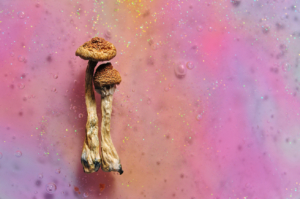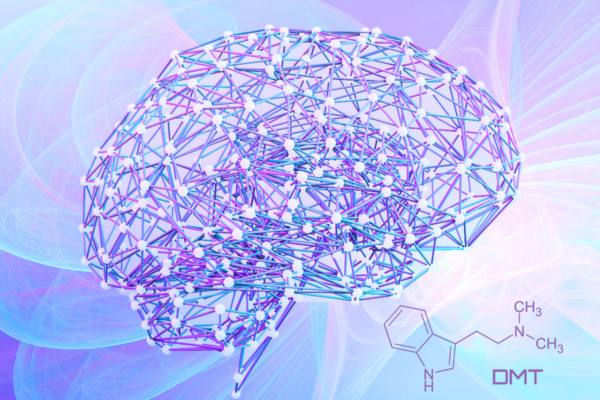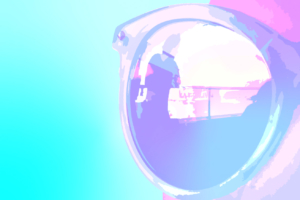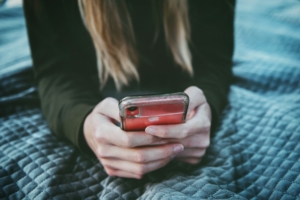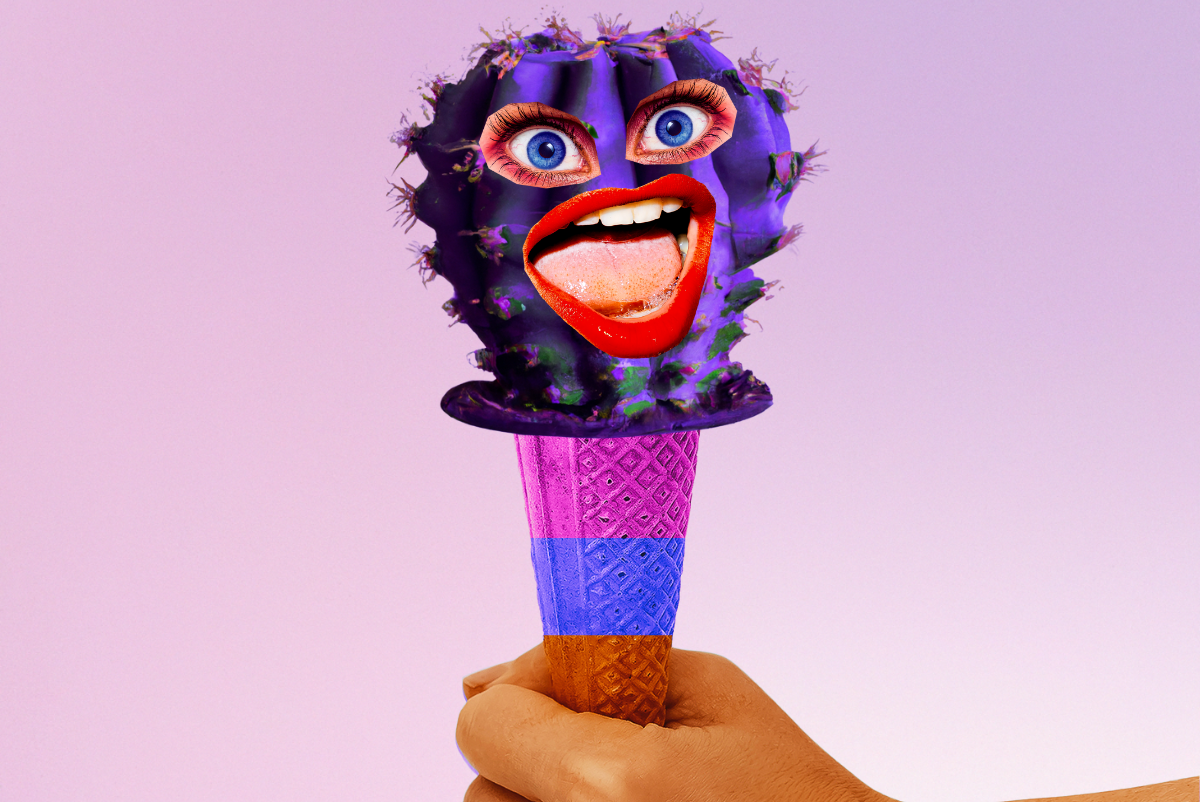
This psychedelic guide was originally written by Third Wave, a platform that inspires cultural awakening through personal transformation.
Disclaimer:
Mescaline is an illegal substance in some places, and we do not encourage or condone its use where it is against the law. However, we accept that illegal drug use occurs and believe that offering responsible harm reduction information is imperative for keeping people safe. For that reason, this guide is designed to ensure the safety of those who decide to use this substance.
Visit facilities where this medicine is legalized here.
[ez-toc]
A Mescaline Overview
Mescaline is a naturally occurring psychoactive alkaloid that is the main psychedelic compound in a range of psychedelic cacti native to the Americas, including peyote, San Pedro, and Peruvian Torch. In its natural state, mescaline has been used in Native American religious and shamanic ceremonies for thousands of years.
Though it’s not as prevalent today, mescaline was the first psychedelic to enter mainstream Western culture—before the widespread use of LSD and psilocybin. More recently, the extracted compound has shown promise in the medical and psychotherapeutic treatment of substance abuse and depression, among other conditions.
Pure mescaline is usually available as a white or brownish crystalline powder, either loose or packed into capsules as a pill. It can also be found as a liquid solution or brew. However, compared to other psychedelics, mescaline extraction tends to be rare in most parts of the world.
How Does Mescaline Work in the Brain?
Pharmacological Structure
Mescaline is a substituted phenethylamine, a molecule based on the basic phenethylamine structure. Along with MDMA, 2C-B, and others, this sets it apart from the tryptamine class of psychedelics, which includes psilocybin, LSD, and DMT.
Receptor Binding Structure
Mescaline binds to virtually all serotonin receptors in the brain but has a stronger affinity for the 1A and 2A/B/C receptors. Structurally, it is similar to LSD and is often used as a benchmark hallucinogen when comparing psychedelics.
Like nearly all hallucinogens, the psychedelic effects of mescaline are likely due to its action on serotonin 2A receptors.[6]
Mescaline also tends to bind with dopamine receptors, either as a selective reuptake inhibitor or as a dopamine receptor agonist. [7]
Dosage Thresholds
Mescaline dosage varies—albeit only slightly—according to how the compound is extracted. For instance, 100 mg mescaline hydrochloride (HCl) is approximately equivalent to 111 mg mescaline sulfate or 85 mg mescaline freebase.[8] These are threshold doses and are given as starting points for calculating your own dosage. A more common range for mescaline HCl is 200-300 mg. Anywhere between 300-500 mg is considered strong, while 500-700 mg is considered heavy. [1][2]
Many factors contribute to the mescaline experience, including dose, mindset, setting, and method of consumption. With that in mind, each individual journey will be unique to the person, time, and place, and there’s no way to predict exactly what will happen. But, mescaline does induce some common experiences and effects that can help you prepare for your journey.
What Can You Expect?
In whatever form it is consumed, a mescaline experience is highly hallucinogenic and lends itself to self-exploration. Many people report that it also creates a uniquely empathic effect in the user, making it useful for personal healing.
Mescaline effects are generally felt within 45-90 minutes of consumption, peaking at two to four hours and lasting for up to eight.[1][2] During this time, you are likely to see closed-eye visuals of colors and patterns, such as mosaics, arabesques, and spirals. These visuals often transform into more definite objects like architecture, animals, and humans. At the same time, ordinary objects in your surroundings may appear more interesting, beautiful, and amazingly mystical—qualities that define the mescaline experience.[3]
Your physical environment, as well as your own body, may distort in size and form. Some have reported the apparent loss of limbs, for instance, or the sense that hard objects like stones or walls have become soft and malleable to the touch. Other senses are also affected, sometimes to the point of synesthesia—sights may be “heard,” thoughts may be “smelled,” and sounds may be “tasted,” for example. Beautiful perfumes and music, or voices speaking strange languages, have also been reported.[3]
For many, mescaline produces an experience of depersonalization or the dissolution of the ego; everything, including oneself, feels unified.[3] This experience can give rise to clear and connected thoughts, self-realization, empathy, and euphoria, each of which can feel profound and deeply meaningful.
“Bad trips” and dysphoric symptoms are possible, but they’re likely more common for people who don’t pay attention to set and setting, or have a history of mental illness.[2]
The effects of isolated mescaline may differ from those of mescaline-containing cacti, like San Pedro, since the latter may contain a mix of other alkaloids, too. Some find extracted mescaline less nauseating, for example, and perhaps more stimulating or mentally more clear.[4][5]
Curious what it’s like to experience mescaline from San Pedro cacti? Read Third Wave’s blog about San Pedro journeys, set and settings, and recovery.

What Are the Potential Benefits & Risks of Mescaline Use?
Potential Therapeutic Benefits
Mescaline has long been considered a powerful agent for healing and change, making it a central component of the shamanic ceremonies of many indigenous groups in the Americas. For many, a mescaline journey offers deep insight into the self and the universe, giving one a greater sense of connection and spirituality. Mescaline is also known for fostering compassion and gratitude, while also alleviating psychological disorders such as anxiety, depression, PTSD and addiction.
Mescaline has also been shown to help people solve problems, access their creativity, be more environmentally conscious, and improve learning. In its original use, the plant medicine was also used to treat a number of ailments, including snake bites, wounds, skin conditions, and general pain.
Potential Risks
Due to its status as an internationally controlled substance, research into the harm potential of mescaline—especially long-term—has been limited. A lethal dose has never been identified, probably because it’s too high to be taken accidentally.[9] In other words, to the best of our knowledge, nobody has ever died from a mescaline overdose.
A 2005 study into the ceremonial use of peyote among Native American populations found there to be no detrimental long-term effects.[10] It should be noted, however, that its use in other contexts may not be as safe—later studies have found an association between prior mental health problems and “bad trips.” Still, mescaline appears to present little risk of flashbacks, or hallucinogen persisting perception disorder (HPPD). [11][12]
Mescaline has been linked to memory and problem-solving impairments in rats, but only at very high doses (30 mg/kg/day).[13][14]
Peyote is traditionally consumed by Huichol women during pregnancy, but mescaline has been linked to fetal abnormalities and should be avoided by pregnant or breastfeeding women.[15][16]
It should also be avoided by anyone with a heart condition and/or high blood pressure, particularly in combination with blood pressure medications. Other drugs to avoid combining with mescaline include tramadol, immunomodulators, alcohol, and stimulants like cocaine and amphetamines. [16][17]
When taking mescaline, it’s advised that you remove hazards, including sharp objects and things you might trip over. It’s also wise to ensure easy access to drinking water, as well as a toilet or bucket in case of purging. A responsible sitter is also a good idea, at least for first-timers. Mescaline should be taken on an empty stomach to minimize nausea and maximize absorption.
Research on Therapeutic Use
Like with many other psychedelic drugs, mescaline’s potential as a therapeutic substance was studied in the 1950s and 1960s—particularly in combination with LSD. Early results found that mescaline could be used to successfully treat addiction and depression, but research was cut short when the drug was made illegal.Research into mescaline’s psychotherapeutic potential is still limited, but renewed interest in the drug shows that it could successfully treat mental health disorders. Studies suggest, for example, that mescaline may increase blood flow and activity in the prefrontal cortex, the area of the brain in charge of planning, problem-solving, emotional regulation, and behavior. Low activity in this area is linked to depression and anxiety, leading scientists to hypothesize that mescaline could help alleviate symptoms of these disorders.
Mescaline also activates serotonin and dopamine receptors, which could help boost mood and treat depression. In fact, one of the traditional therapeutic uses for peyote was as an antidepressant, and depression scores are reportedly low among members of the Native American Church, where peyote use is common.[24]
Some researchers have found that the antidepressant benefits of mescaline correlate to a subjects’ willingness to engage with the experience, to face themselves and to act upon the insights received. In one mid-century study, some of the most significant transformations or breakthroughs came about months after the experience itself, even if the initial psychedelic therapy session seemed to be a failure. In the context of psychotherapy, mescaline may also be useful for re-living or recalling repressed memories.
Mescaline could also help reduce suicidal thoughts, according to researchers at the University of Alabama. Using data from the National Survey on Drug Use and Health, the researchers found that people who have used a psychedelic drug at least once in their life show lower rates of suicidal thinking.
A 2013 study also found that lifetime mescaline or peyote use was significantly linked to a lower rate of agoraphobia, an anxiety disorder where subjects perceive their surrounding environment to be threatening.
Addiction is another promising application for mescaline’s therapeutic potential. As peyote, mescaline has long been used in traditional ceremonial contexts to treat alcoholism. It’s interesting to note that while alcohol abuse rates among the Navajo and other Native American tribes are said to be roughly twice the U.S. average, they are significantly lower among NAC members.[25][26][24] This correlation isn’t conclusive, of course, but research does suggest that there could be a more-than-casual link. In fact, a researcher at Harvard Medical School who has spent years studying peyote use found that the substance has reduced rates of alcoholism and drug abuse among Native Americans. He also concluded that the ceremonies themselves are an important element to the plant’s healing effects.
In traditional settings, mescaline has been used for alleviating symptoms of fever, headache, sunstroke, and arthritis.[27] Actually the cactus is traditionally seen as something of a cure-all and is sometimes taken daily. According to some Native Americans, the proper use of peyote renders all other medicines superfluous.[28] While there are key differences between modern Western medicine and the medico-religious approach of Native American mystics, clinical studies have supported mescaline’s role in pain relief, and in promoting the release of growth hormones.[29][30]
Can You Microdose Mescaline?
Microdosing is the act of consuming sub-perceptual (unnoticeable) amounts of a psychedelic substance. Many individuals who have integrated microdosing mescaline into their weekly routine report higher levels of creativity, more energy, increased focus, and improved relational skills, as well as reduced anxiety, stress, and even depression. Some enthusiasts also report that microdosing mescaline has helped them heighten their spiritual awareness and enhance their senses.While psilocybin and LSD are more commonly used for microdosing, mescaline is a good alternative. In fact, many users find mescaline more consistently reliable than LSD and psilocybin—and many also report greater results in personal growth and benefit. Mescaline also has a much longer history of use—and this goes for microdosing too. The (Rarámuri) Indians, for example, have used small amounts of peyote while hunting, allowing them to stalk deer for days on end without rest. [31]
In modern times, self-experimenters around the world are reporting a much wider range of benefits, including personal insights, mood enhancement, increased empathy and creativity, lifestyle changes, and even lucid dreams.
Some people have also found mescaline microdosing useful for treating the symptoms or even the underlying causes of depression, including experiencing a sense of peace and calm without the “numbness” of conventional antidepressant medications.[4] In fact, it tends to have the opposite effect of actually sharpening the senses and enhancing mental clarity.
Beyond cognitive effects, imperceptible doses of mescaline have also been shown to act as anti-inflammatory agents. In fact, this is one of the ancient medicinal uses of this compound. A 2008 study concluded that mescaline had “extraordinarily potent” anti-inflammatory effects, and a 2018 study found that psychedelics in general help regulate inflammatory pathways, which could prove therapeutic for a number of diseases, including asthma, atherosclerosis, inflammatory bowel disease, and retinal disease.
To learn more about microdosing mescaline, read our comprehensive guide.
Personal & Spiritual Growth
Most users find mescaline personally or spiritually transformative, and many emerge with a lasting appreciation for the interconnectedness of all life in the universe, and of their role within it.[18] Sometimes the mere thought of a separate identity can even seem “obscene.”[19] Others feel a deep sense of gratitude and unconditional compassion for everyone and everything around them.[20] Early studies of mescaline also found that the experience left people with a greater sense of wellbeing, inner strength, and vitality.[21]In line with Native American ritual use of peyote, mescaline can also help people solve sticky problems. In one study, a group of 27 men were given mescaline and asked to think about a problem they were facing at work, some of which had persisted for months. After just one dose, almost every participant either solved the problem for themselves or came up with new ways to approach it.[22]
Peyote may also boost learning capabilities. In another study, researchers found that mescaline helped goldfish learn to avoid a shock more quickly. These findings support the prevailing view that mescaline and other psychedelics can enhance creativity. As the psychologist Stanley Krippner put it, “to invent something new, one cannot be completely conditioned or imprinted.”[23] Psychedelics like mescaline tend to dissolve preconceptions and elicit fresh perspectives on reality.
Is Mescaline Legal?
In the United States, only Native American members of the NAC are legally permitted to use mescaline—but only in the form of peyote. The City of Oakland, CA, decriminalized all “entheogenic plants” containing indoleamines, tryptamines, or phenethylamines, making it legal for adults aged 21 and over to cultivate and consume any mescaline-containing cacti—regardless of ethnicity and religious affiliation. The same does not apply to extracted mescaline, however.[32][33]Otherwise, both mescaline and peyote are strictly controlled as Schedule I substances. Other mescaline-containing cacti (and plants), such as San Pedro, are legal only for ornamental purposes.[2]
Mescaline is also illegal in the UK and Canada, as well as many European countries. However, peyote and other mescaline-containing cacti are generally legal to grow for ornamental purposes. The same is true in some Australian states, including Victoria and New South Wales, but not in Western Australia, Queensland, and the Northern Territory, where even San Pedro is illegal.[2]
You can legally harvest San Pedro cactus in most countries, much easier than you think. Learn how to grow San Pedro from home.
